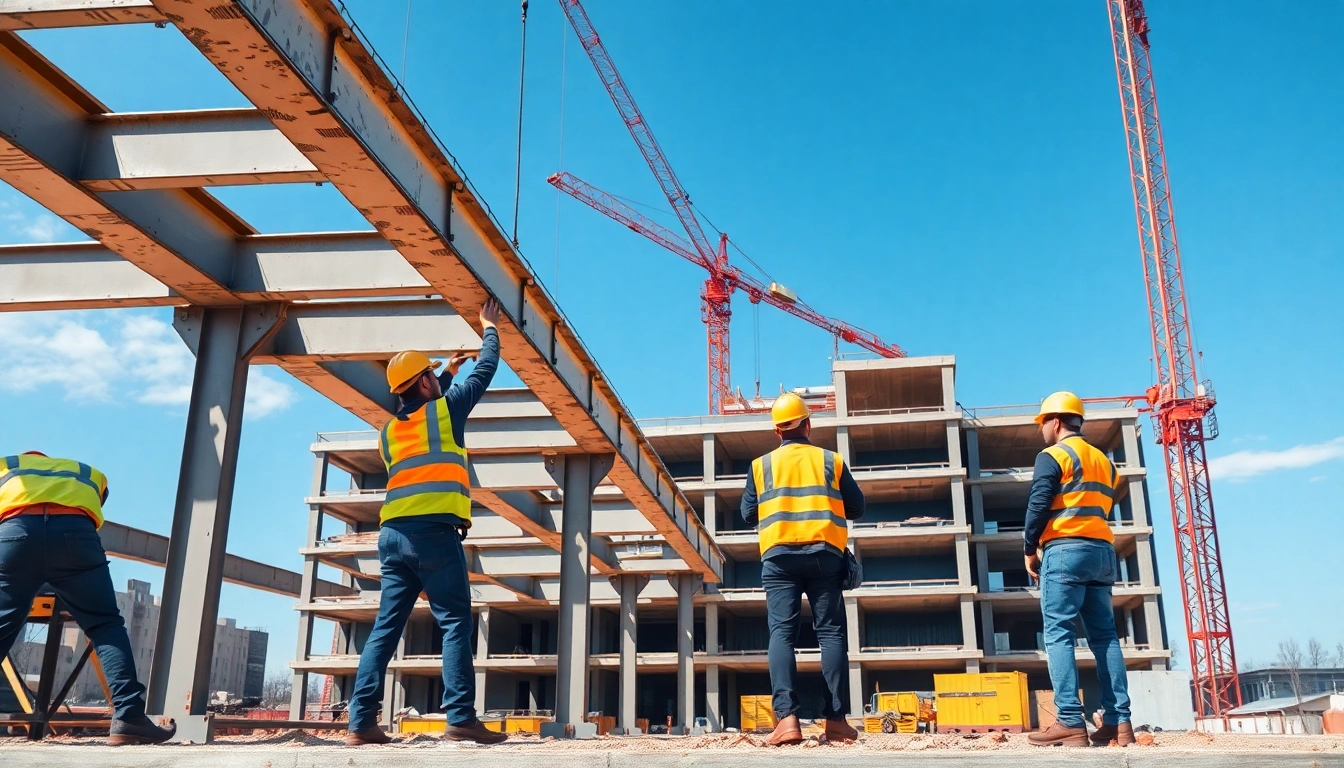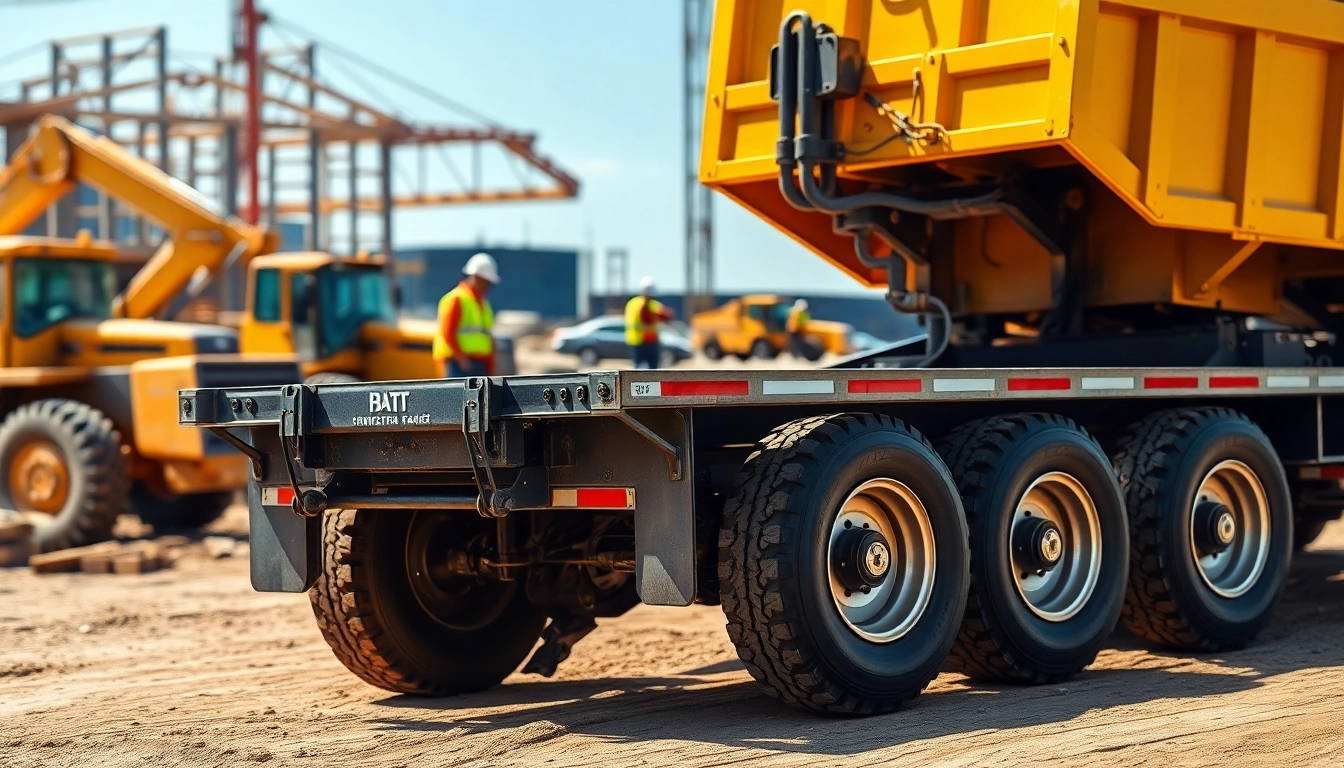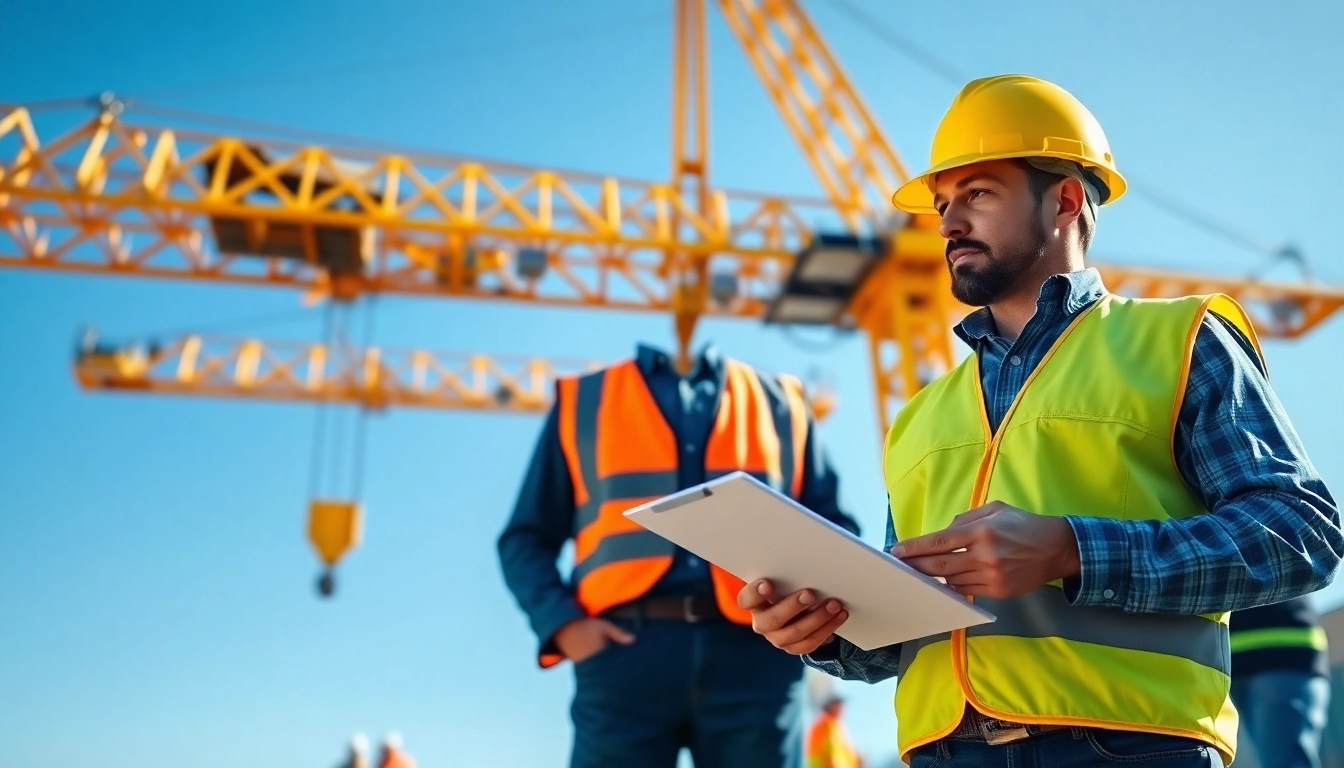Introduction to Structural Steel Installation
Structural steel installation plays a critical role in the construction industry, forming the backbone of many residential, commercial, and industrial buildings. Its importance extends beyond mere aesthetics; it provides essential support and stability, allowing structures to withstand various loads and environmental conditions. Understanding the intricacies involved in structural steel installation can significantly enhance project outcomes, ensuring safety, efficiency, and longevity of the built environment.
Understanding Structural Steel and Its Applications
Structural steel is a category of steel used as a construction material for various structural purposes. It is defined by its shape, chemical composition, and mechanical properties. Common forms of structural steel include beams, columns, and plates, each designed for specific load-bearing responsibilities. Its applications span a broad array of projects, such as skyscrapers, bridges, and warehouses, reflecting its versatility and strength.
In addition to traditional buildings, structural steel is increasingly used in innovative applications like modular construction, which emphasizes prefabrication and streamlined assembly processes. Such advances underscore the adaptability of structural steel to meet the evolving demands of modern architecture and engineering.
The Importance of Proper Installation Techniques
The effectiveness of structural steel lies not just in its design and manufacturing but primarily in its installation. Proper installation techniques are crucial to ensuring structural integrity and safety. Faulty installation can lead to catastrophic failures, compromising the building’s lifespan and posing risks to human safety.
Proper techniques include precise alignment, use of correct fastening methods, and adherence to load specifications. Training and continuous education for installation teams also play essential roles in maintaining high standards, fostering a culture of safety and proficiency on construction sites.
Common Materials Used in Structural Steel Installation
Several materials are associated with structural steel installation, each contributing different qualities to the overall project. These include:
- Steel Alloys: Certain alloys are used to enhance the properties of steel, making it more resistant to corrosion or increasing its yield strength.
- Bolts and Fasteners: High-strength bolts and rivets are essential for joining steel components safely and securely, impacting load transfer and overall strength.
- Paints and Coatings: Protective coatings help prevent rust and extend the life of structural elements exposed to moisture and environmental elements.
- Welding Materials: Various welding rods and filler materials are used during fabrication and onsite connections, ensuring strong welds that are crucial for structural integrity.
Planning for Structural Steel Installation
Before the physical installation begins, comprehensive planning is essential. This stage sets the foundation for the entire project, impacting timelines, costs, and safety measures.
Assessing Project Specifications and Requirements
Every structural steel installation project begins with an assessment of specific requirements. This includes reviewing architectural and engineering plans to understand loads, stress points, and material specifications. In addition, compliance with local codes and regulations is analyzed, ensuring all criteria meet safety and quality standards.
This step often involves consultations with engineers and architects to clarify design intentions and resolve any ambiguities early in the project lifecycle. It is also beneficial to engage with contractors and installation teams at this stage to align on expectations and responsibilities.
Site Survey: Preparing for Installation
A detailed site survey is a critical phase that helps installers evaluate the environment where the structural steel will be erected.
Key aspects of a site survey include:
- Soil Conditions: Understanding pre-existing soil conditions informs foundation design and helps determine any necessary treatment or reinforcement.
- Access Points: Evaluating how construction materials will be delivered and the logistical planning for moving heavy equipment onsite is crucial.
- Surveying Existing Structures: Understanding the interplay of existing buildings or natural obstacles provides insight into potential challenges during installation.
Creating a Detailed Installation Timeline
After assessing specifications and site conditions, a detailed installation timeline should be created. This timeline outlines each step of the process, from initial deliveries through to final inspections. Scheduling should account for:
- Lead times on steel fabrication and delivery.
- The duration of various installation stages, including lifting and securing elements.
- The availability of labor and equipment, ensuring that all resources align to prevent delays.
Effective project management often utilizes software tools to track progress against the timeline and adjust resources as necessary, keeping all stakeholders informed.
Best Practices in Structural Steel Installation
Implementing best practices in structural steel installation helps ensure safety, efficiency, and quality in each project.
Safety Protocols for Installation Teams
Safety must always be a top priority during structural steel installation. All personnel should undergo safety training that covers:
- Proper use of personal protective equipment (PPE), such as hard hats and harnesses.
- Understanding hazards specific to the site and the work being performed, including fall risks and equipment operation.
- Emergency preparedness, including procedures for medical incidents or unexpected site conditions.
Conducting regular safety audits and meetings reinforces the importance of a safety culture, identifying any potential hazards before they become problematic.
Effective Handling and Transportation of Steel Components
The handling and transportation of structural steel components are fundamental to maintaining quality and safety. Best practices include:
- Using proper rigging techniques to lift and move steel components, maintaining stability and preventing damage during transport.
- Inspecting materials upon delivery for damage or inaccuracies compared to project specifications.
- Organizing site layout to allow efficient storage and quick access to needed materials during installation.
Quality Control Measures During Installation
Quality control during installation significantly affects the performance and safety of structural steel. Key measures include:
- Regular inspections of connections, welds, and fasteners to ensure they meet design specifications and standards.
- Documenting installation activities, providing a record that can be referenced for future maintenance or inspections.
- Utilizing advanced technologies, such as laser scanning, to confirm precise alignments and dimensions throughout the installation process.
By implementing stringent quality control measures, contractors can minimize the risk of structural failures and improve overall project quality.
Challenges in Structural Steel Installation
Despite the best-laid plans, challenges can arise during structural steel installation. Identifying these challenges early enables teams to develop effective solutions.
Identifying Common Challenges and Solutions
Common challenges faced during structural steel installation often include:
- Weather Delays: Inclement weather, such as rain or snow, can halt outdoor work. Establishing contingency plans, including temporary shelters or schedule adjustments, helps mitigate these impacts.
- Supply Chain Issues: Delays in material delivery can impact timelines. Maintaining open lines of communication with suppliers and having contingency materials can alleviate this risk.
- Labor Shortages: A shortage of skilled labor can slow installation processes. Investing in training programs and cross-training workers can help address these gaps.
Dealing with Environmental and Site-Specific Issues
Every construction site presents unique environmental challenges. These may include:
- Adverse soil conditions that require special foundations or additional earthworks.
- Proximity to other structures that necessitate careful planning to avoid damage.
- Regulatory restrictions on noise or emissions that may limit working hours or methods.
Effectively addressing these environmental factors requires flexibility in design and execution strategies, ensuring compliance without sacrificing project integrity.
Mitigating Risks During the Installation Process
Risk mitigation strategies should be integrated into all phases of structural steel installation. Approaches include:
- Conducting thorough risk assessments before the commencement of installation, identifying potential hazards associated with equipment, materials, and site conditions.
- Implementing safety protocols that align with industry best practices, ensuring all team members are aware of their responsibilities and procedures.
- Involving all stakeholders, including architects and engineers, in regular reviews and feedback loops, maintaining transparency and collaborative problem-solving.
Evaluating Success in Structural Steel Installation
Evaluating the success of structural steel installation involves various metrics and feedback methodologies that ensure long-term project satisfaction and structural integrity.
Performance Metrics to Assess Installation Quality
Establishing key performance indicators (KPIs) can help assess the effectiveness of structural steel installation. Important metrics include:
- Time to Completion: Measuring against the original timeline to determine project efficiency.
- Cost Variance: Analyzing the actual cost of installation against the budgeted amount.
- Safety Incident Reports: Tracking any safety incidents can provide insights into the effectiveness of implemented protocols and training.
Feedback and Continuous Improvement Practices
Valuable feedback from all stakeholders helps inform continuous improvement practices. Techniques for gathering feedback include:
- Conducting post-project reviews to evaluate performance and lessons learned.
- Creating anonymous survey channels for workers to report issues or provide suggestions.
- Establishing a culture of open communication, encouraging dialogues about challenges and innovative solutions.
Case Studies: Successful Structural Steel Installations
Studying successful installations provides actionable insights into best practices. Various case studies demonstrate how effective planning, safety measures, and quality control contribute to success:
- High-Rise Development: A project that leveraged advanced technology for real-time tracking of installation metrics achieved completion ahead of schedule.
- Bridge Construction: A thorough site analysis allowed a team to identify potential environmental challenges early, reducing delays through pre-emptive measures.
- Industrial Warehouse: By implementing rigorous safety training, a construction company recorded zero incidents during a multifaceted structural steel installation.
Each of these case studies illustrates the impact that effective practices and strategies can have on the successful completion of structural steel installation projects.



